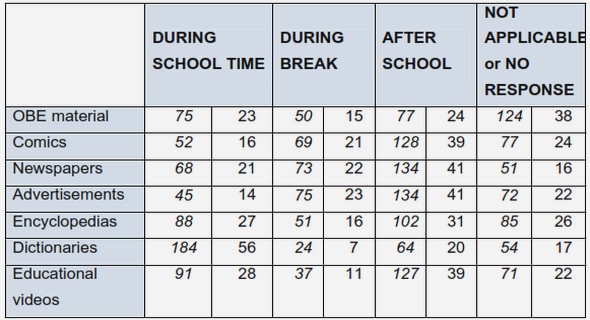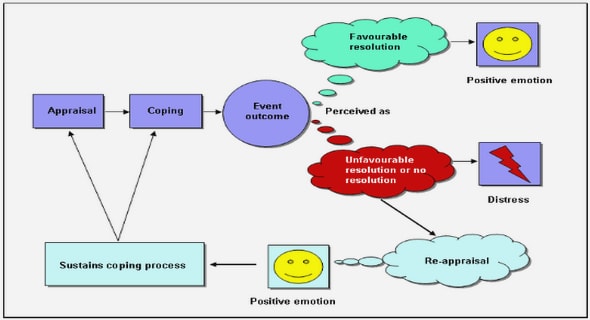Get Complete Project Material File(s) Now! »
CHAPTER 3 THEORETICAL FRAMEWORKS UNDERPINNING ASSISTIVE TECHNOLOGY
INTRODUCTION
This chapter focuses on theories such as Cultural Historical Activity Theory, Wellness Theory and Universal Design for Learning which serve as the lens for the current study. This chapter further focuses on the extensive work of Edyburn (2015, 2013, 2006, 2002), Blackhurst (1965), the research of Dell, Newton and Petroff (2012), Golden (1998) and Roblyer (2003) and their research which has been instrumental in shaping the understanding of AT both at a local level as well as internationally.
This chapter explores how AT, in all its forms, can be used to promote Hettler’s (1979) dimensions of wellness, as well as promote Universal Design for Learning (UDL), Cultural Historical Activity Theory (CHAT), inclusion and enhanced participation.
THEORETICAL FRAMEWORKS
Chinn and Kramer (1999, p.258) define a theory as an “expression of knowledge….a creative and rigorous structuring of ideas that project a tentative, purposeful, and systematic view of phenomena”. A theoretical framework is able to provide a general representation of relationships between variables in a given study situation.
CULTURAL HISTORICAL ACTIVITY THEORY
The Origins and Development of the Theory
For purposes of this study, Cultural Historical Activity Theory (CHAT) is a lens through which human activities are seen as a series of processes contained within a bounded system. Vygotsky (1978) asserted that knowledge was first seen at a social level, and then later translated into the individual level of understanding. The basis of socio-cultural theory, therefore, posits that a person’s individual development is intertwined with his or her social environment. Leont’ev (1978) introduced activity as the unit of analysis in the socio-cultural framework and incorporated human behavior with mental development. These processes allow conscious meaning-making of activities in which the student chooses to participate. Within an activity, the events and consequences of the participation in those events can change the participants and their knowledge of their environment, culture and beliefs. This idea was carried further through the work of Engeström’s (1999) Activity Systems Analysis which mapped the interaction and effect of and between individuals or groups and their environment and vice versa.
Cultural Historical Activity Theory, as developed by Vygotsky (1978) and as further developed by Leont’ev (1978) and refined by Engeström (1999) postulates that aspects of culture, such as values, beliefs, customs and skills, are transmitted from one generation to the next through social interaction, especially involvement with knowledgeable community or family members. It is concerned with the process of mediation: how practical activity shapes and is shaped by cognitive functioning. This, in turn, aids children in acquiring the thought processes and behaviors deemed valuable and specific to their culture or society. The changes or growth that children experience as a result of these social interactions vary between cultures and this variance allows children to become competent in tasks seen as important or necessary in their particular society or culture. Vygotsky (1978) explained this interaction in terms of “mediated action” (p. 40) in which participants are not passive but active as they interact with artefacts or tools and use these interactions to make meaning of their environment, or evolve and change their current meanings. Vygotsky (1981) explained this “genetic law of cultural development” (p. 163) as interactions which occur on two levels; first between people interacting together and secondly, within an individual as this social knowledge and learning become entrenched in memory.
CHAT is a theory that addresses human activities as they relate to artefacts, shared practices and institutions. As people study, work and play, they show an accumulated set of habits and values which indicates that learning is not an isolated act. Learning is situated in time and place, influenced by the surrounding resources and subject to the reciprocal influence of learners themselves in that context, thus adding to and changing the learning.
CHAT addresses the central tenet of Assistive Technology in that learners experiencing a barrier to learning can be placed in a context and given the correct tools (technology) to enable interaction with the resources/artefacts (technology) and thus build their learning experiences and knowledge. Again, the idea that learning is not isolated but works in tandem with the environment and tools in that environment which can either support or hinder learning and the acquisition of new skills or knowledge is highlighted.
Functioning within this dynamic whole, incongruence or contradictions arise, in what the student knows or does not know. The concept of contradictions is explored by Engeström (1999) and is seen as new ways of thinking or doing that come into conflict with traditional or currently accepted thinking and ways of doing. These contradictions exist among the elements, or between elements, or among activities in Vygotsky’s triangulation concept of CHAT. However, these contradictions serve a unique purpose in the learning cycle, becoming a platform from which to launch new learning. Engeström (1987) described this as “expansive learning” (p. 137), in which changing activity systems can aid innovation and improvement in educational practice. By forcing the participants in that learning system to think differently or change their practice, this expansive learning brings about change through the engaging with the contradictions or incongruence that arises. Activity systems do not reside in a vacuum but are constantly influenced by the conditions in which they are situated, including other related activity systems and the persons who engage in the activities themselves. The system is continually striving for balance while encountering tension and contradiction, thus it is a learning cycle similar to Vygotsky’s (1978) Zone of Proximal Development (ZPD). The nature of this model of research is inherently interventionist and thus aptly suited to research on the use of Assistive Technology to promote inclusion of all students in the mainstream classroom.
The High School Learner, Cultural Historical Activity Theory and Assistive Technology
In a classroom situation, CHAT would be best exemplified if students were allowed to choose the manner in which they engage or participate in the activity. When children choose the mode of activity, they also become emotionally engaged and the learning, which is an expansion of one’s action possibilities, is a by-product of the pursuit of motives and goals.
A practical, research example of CHAT
In a 5-year study conducted by Kolokouri, Theodouraki and Plakitsi (2012), based on a CHAT perspective, a chosen learning area, Science, was seen as a dynamic activity system. The participants/students, the schools/institutions, the methods, the tools and the objects were connected in a cultural, historical and social process. Their study illustrated how students could choose their means of engagement to demonstrate knowledge in the combination of Natural Sciences and History lessons in the classroom. In this sense, learning becomes an ongoing process affected by societal and historical conditions in which the interactions of science, culture and society play a central role. This is reminiscent of both Vygotsky (1978) and Engeström’s (1987) work in the CHAT arena. In their laboratory lesson, Kolokouri et al. (2012) included such participation methods as story narration, making comics of the ideas, debates, drawing and predictions to include every student:
This approach to activity-based, participatory-focused and outcomes-based teaching and learning is further illustrated in the Outcomes Based Education (OBE) approach, often referred to as standards based education, as developed by Spady (1995). This approach is built on three premises: all students can learn and succeed (but not on the same day, or in the same way); success breeds success; and schools control the conditions of success. In the OBE approach to learning, the focus is student-centered and contrasts with traditional education, which primarily focuses on the resources that are available to the student, which are called inputs. OBE requires the students to demonstrate the skills and course content that they are required to learn, using a variety of methods (such as the use of comic strips mentioned above) to engage with and display their new knowledge. OBE generally promotes curricula and assessment based on constructivist methods. It discourages traditional education approaches based on direct instruction of facts and standard methods. This approach neatly coincides with the CHAT theory which encourages the collective, the group, to help control the conditions in the learning environment. Activity theorists believe the collective control increases the individual’s control over his/her own learning and thus enhances learning. Activity theorists further acknowledge the diversity of student populations and how this enhances the learning, since diversity promotes the “cogenerative dialogue” (Ritchie, 2012, p. 10) that mediated action brings out and thus adds to the knowledge in the classroom.
Language used by the students whilst engaging in the activities can be seen as a means to mediate the concrete realization of the goals the students have set for themselves during their participation in a classroom activity or assigned task, using their chosen means of engagement as a tool for acquiring new knowledge and mediating their learning. Thus the person’s individual development is intertwined with his/her unique social environment.
Often said to be one of the best kept secrets of academia (Engeström, 1993), CHAT offers the possibility to overcome some of the obstacles inherent in the “talk and chalk” approach to teaching and learning. Empowering students to advocate and help choose their means of participation, which echoes the work of Gardner (1983) and the multiple intelligences theories, can help overcome barriers to learning. The CHAT theory is of immense interest to education and learning as it can be helpful in analyzing data recorded in real classrooms and designing for change.
DECLARATION
ABSTRACT
LIST OF TABLES
LIST OF FIGURES
Acronyms
Chapter 1 OVERVIEW OF THE RESEARCH
1.1 Introduction
1.2 Background
1.3 Motivation
1.4 Significance of study
1.5 Contribution to the body of knowledge
1.6 Problem Statement
1.7 Research questions
1.8 Aims and Objectives
1.9 Research Design and Methodology
1.10 Sampling
1.11. Data Collection: PHASE ONE – Pilot study
1.12 Data Collection Tools: PHASE TWO
1.13. Data Analysis
1.14 Trustworthiness
1.15 Ethical Considerations
1.16 OUTLINE
1.17 Summary
Chapter 2 CONCEPTUAL FRAMEWORK
2.1 Introduction
2.2 Inclusive Education in Canada
2.3 Assistive Technology in Mainstream Schools
2.4 Assistive Technology in the Global Context
2.5 Summary
CHAPTER 3 THEORETICAL FRAMEWORKS UNDERPINNING ASSISTIVE TECHNOLOGY
3.1 Introduction
3.2 Theoretical frameworks
3.3 Cultural Historical Activity Theory
3.4 Wellness Theory
3.5 Summary
CHAPTER 4RESEARCH METHODOLOGY
4.1 Introduction
4.2 The Research Paradigm
4.3 Philosophical Framework
4.4 Research method
4.7 Population and sampling
4.8 Instruments
4.9 Data Collection – PHASE 1
4.10 Data Analysis
4.11 Triangulation
4.12 Ethical considerations
4.13 Summary
CHAPTER 5 FINDINGS AND INTERPRETATION OF DATA
5.1 Introduction
5.2 Themes from SEMI-STRUCTURED interviews
5.3 Themes from Self-completed Questionnaires
5.4 Themes from Document Analysis
5.5 Summary
CHAPTER 6 DISCUSSION OF FINDINGS
6.1 Introduction
6.2 THEMES COMBINED
6.3 LIMITATIONS OF THE STUDY
6.4 STRENGTHS OF THE STUDY
6.5 CONTRIBUTION TO THE BODY OF KNOWLEDGE
6.6 Summary
CHAPTER 7 A FRAMEWORK FOR THE USE OF AT IN SUPPORTING LEARNERS IN MAINSTREAM SCHOOLS, CONCLUSIONS AND RECOMMENDATIONS
7.1 Introduction
7.2 FRAMEWORK FOR THE USE OF AT IN SUPPORTING LEARNERS IN MAINSTREAM SCHOOLS
7.3 RECOMMENDATIONS
7.4 RECOMMENDATIONS FOR FURTHER RESEARCH
7.5 PERSONAL REFLECTIONS
REFERENCES
GET THE COMPLETE PROJECT
THE UTILIZATION OF ASSISTIVE TECHNOLOGY TO ENHANCE EDUCATIONAL SUPPORT FOR ALL LEARNERS IN A MAINSTREAM SCHOOL

